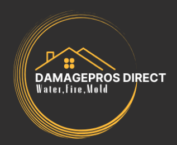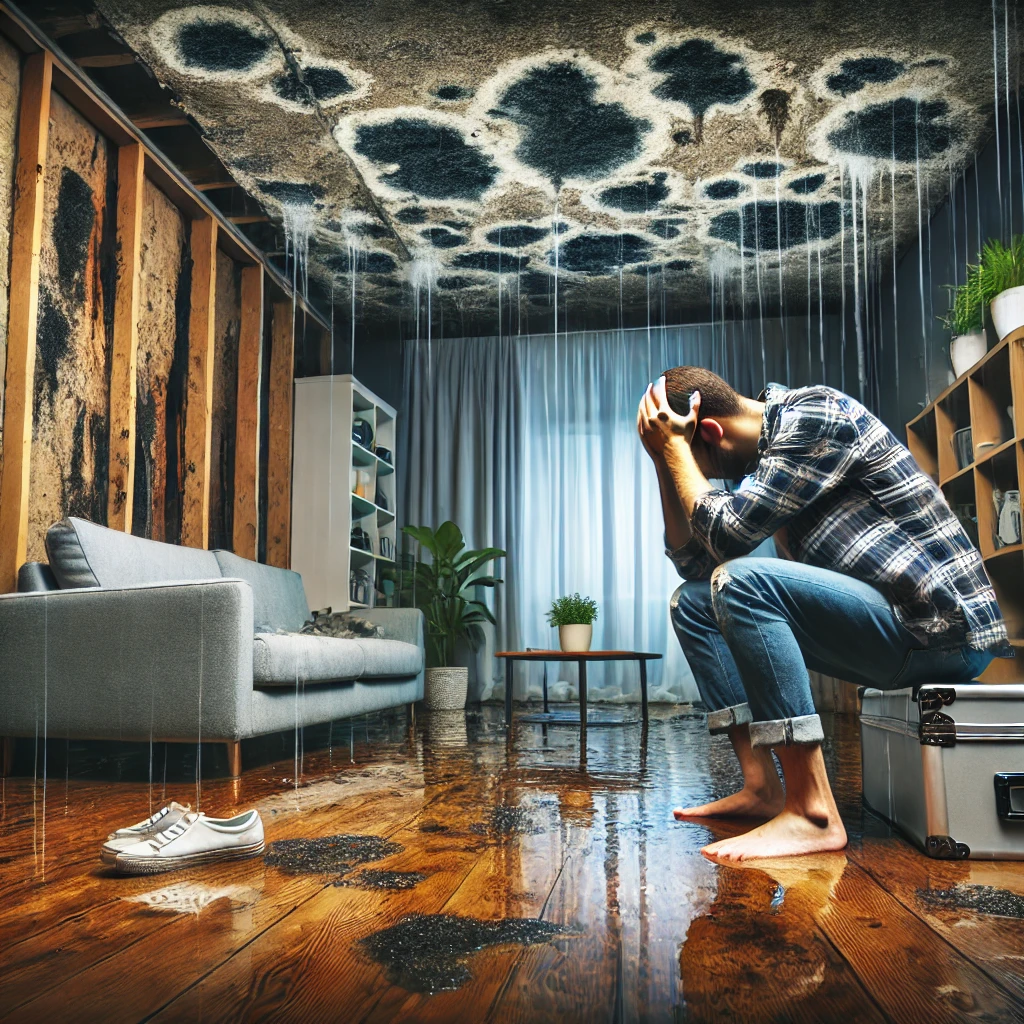Many homeowners consider tackling water damage restoration themselves to save money and time. However, your enthusiasm for DIY solutions can sometimes lead to unforeseen risks that may compromise your safety and result in further damage. Understanding the hidden perils of these methods is important for protecting your home and ensuring effective restoration. In this blog post, we’ll explore the dangers that come with DIY water damage restoration and why professional help might be the safer option for your situation.
Key Takeaways:
- DIY water damage restoration can lead to inadequate drying, potentially resulting in mold growth and further structural damage.
- Homeowners may lack access to specialized equipment and expertise, making it challenging to properly address water damage issues.
- Attempting DIY methods can sometimes void warranties and insurance coverage, leading to higher costs in the long run.
Common DIY Water Damage Restoration Methods
A wide array of DIY water damage restoration methods exist that you might consider when faced with water issues in your home. These techniques range from basic water extraction to more involved drying and dehumidification approaches. While these methods can be tempting to try, it’s crucial to understand their effectiveness and potential risks to avoid further damage to your property.
Water Extraction Techniques
Around your home, you may find various tools and techniques to remove excess water, such as using a wet/dry vacuum or towels to soak up standing water. While these methods can provide immediate relief, it’s crucial to ensure that all water is removed to prevent lasting damage to your floors and walls.
Drying and Dehumidification Approaches
Between the initial water extraction and complete restoration, drying and dehumidification play vital roles. Using fans, dehumidifiers, or natural ventilation can help remove lingering moisture from your home’s structure. Proper drying is necessary to inhibit mold growth and other secondary issues that could arise from residual dampness.
Even after you’ve removed the visible water, it’s crucial to check for hidden moisture behind walls, under flooring, or in other unique spaces. You might need to use moisture meters or infrared cameras to assess the extent of the remaining moisture. Effective drying and dehumidification not only relieve immediate concerns but also contribute to the long-term health of your home, protecting it against mold growth and structural damage.
Hidden Risks in DIY Restoration
It is crucial to understand that DIY water damage restoration can expose you to various hidden risks. Without professional training and equipment, you may overlook critical issues, leading to further complications in your home. From inaccurate assessments of the damage to improper cleaning methods, the dangers can escalate quickly, compromising the health of your living environment and the structural integrity of your property.
Structural Damage Assessment Challenges
On your journey to restore water damage, accurately assessing structural damage becomes a daunting challenge. Hidden leaks within walls, ceilings, or floors can go undetected, leading to significant issues later. As a DIYer, you might miss these hidden areas, leaving your home vulnerable to compromised support and unforeseen damage, which could require professional intervention down the line.
Mold Growth and Health Hazards
Growth of mold is one of the most concerning risks after water damage occurs. Without proper remediation, damp environments can foster mold development, which can pose serious health hazards. Prolonged exposure to mold spores can lead to respiratory issues, allergic reactions, and other health complications that can affect your family’s well-being.
In addition, you may not realize that mold can spread rapidly throughout your home, thriving in hidden places like behind walls and under carpets. Even if you attempt to remove visible mold with DIY methods, you might only be addressing the symptoms rather than the source. This can escalate the problem, increasing your risk of health issues and potentially resulting in costly professional mold remediation later.
Safety Concerns
Despite the appealing nature of DIY water damage restoration, safety should always be your top priority. You’ll encounter various hazards that could lead to severe injury or health risks. From electrical issues to exposure to hazardous materials, understanding these dangers is imperative to protect yourself and your environment while managing water damage effectively.
Electrical and Chemical Hazards
The presence of water increases the risk of electrical shock and may lead to short circuits in your home’s wiring. Additionally, you could be exposed to harmful chemicals from cleaning agents or mold treatment solutions. It’s vital to disconnect any electrical appliances and use protective gear to minimize potential injuries.
Cross-Contamination Risks
For anyone attempting DIY water damage restoration, cross-contamination poses a significant threat to health and safety. Without proper containment, harmful bacteria and mold can spread to unaffected areas in your home, exacerbating the situation and putting your family at risk.
Hence, it’s imperative to take proactive steps to prevent cross-contamination. Utilizing barriers to seal off damaged areas, properly disposing of contaminated materials, and ensuring thorough cleaning practices will help safeguard your living space. You should also consider wearing protective gear, like masks and gloves, to minimize your exposure to potentially harmful substances during the restoration process.
Long-Term Consequences
Keep in mind that poorly executed DIY water damage restoration can lead to long-term consequences, such as structural damage and mold growth, which may require extensive repairs down the line. When initial issues are not adequately addressed, they can escalate and result in higher costs and further complications, ultimately affecting your home’s safety and integrity.
Insurance Claim Complications
Above all, if you attempt DIY restoration and something goes wrong, you may inadvertently complicate your insurance claims. Insurance companies often have specific guidelines for water damage repairs, and improper handling may lead to claim denials or reduced payouts, leaving you to cover the costs yourself.
Property Value Impact
At the same time, neglecting professional restoration services can negatively impact your property’s value. Potential buyers may see the aftermath of your DIY efforts and question the overall condition of the home, leading to lower offers or difficulty in selling.
For instance, if mold becomes an issue due to inadequate drying or cleaning, it could result in significant remediation costs, which would likely deter buyers or affect appraisal values. Additionally, visible signs of water damage, even after repairs, can create a perception of poor maintenance, making your property less attractive in a competitive market.
Professional vs. DIY Assessment
For homeowners facing water damage, the choice between professional help and DIY methods often presents a dilemma. A thorough assessment of your situation is crucial, as relying on DIY techniques may not address underlying issues effectively. Conversely, professional services can provide comprehensive evaluations that ensure your property is restored to its original state, preventing future complications.
Equipment and Expertise Comparison
Assessment of the tools and skills needed for restoration brings clarity to your decision. The table below highlights the differences between DIY and professional approaches.
| DIY Methods |
Professional Services |
| Limited equipment availability |
Specialized tools and technology |
| Basic knowledge and experience |
Trained specialists with expertise |
Cost-Benefit Analysis
At first glance, handling water damage restoration yourself may seem like a more affordable option. However, it’s pertinent to weigh the long-term benefits against the short-term savings. Engaging professionals may entail higher upfront costs, but their knowledge and equipment often lead to a more thorough job, potentially saving you from costly repairs later.
The cost-benefit analysis of your restoration strategy should factor in not only immediate expenses but also the likelihood of future damage. DIY methods might seem economical, yet inadequate handling can result in ongoing issues or repeated repairs, escalating overall costs. Professionals bring expertise that minimizes the risk of errors and ensures your property is fully restored, making it a worthwhile investment.
When to Call Professionals
Now that you’ve attempted some DIY methods, it’s important to assess whether the situation requires professional intervention. If the water damage is extensive, or if you notice mold growth and structural instability, it’s best to call in experts. Professionals have the equipment and expertise to manage severe situations safely, ensuring that your property and health aren’t compromised.
Severity Indicators
About water damage, there are clear indicators that signify the need for professional help. Look for extensive water saturation, discoloration on walls and ceilings, and any signs of mold or mildew. If the damaged area exceeds a few square feet, or if the damage impacts electrical systems, reach out to experts to avoid further complications.
Emergency Response Timeline
When facing water damage, your response time can significantly affect the overall repair process. The sooner you act, the better your chances are of minimizing extensive damage. Mold can start to develop within 24 to 48 hours, so it’s vital to prioritize timely action and consider professional assistance without delay.
Due to the time-sensitive nature of water damage, having a response plan in place is vital. Quick action can help prevent further damage and potential health risks associated with mold and structural issues. If you find yourself in a situation where the damage exceeds your control, don’t hesitate to reach out to professionals who can assess the situation and implement the necessary recovery steps efficiently.
Summing up
Drawing together the insights on DIY water damage restoration methods, it’s important to acknowledge that while they may seem cost-effective, you could encounter hidden perils. Mold growth, structural damage, and improper drying techniques can lead to more significant issues down the line. Prioritizing safety and thoroughness in your approach is key to avoiding severe consequences. You should weigh the potential risks against your experience and resources, and consider consulting professionals when faced with extensive water damage to ensure an effective solution.
FAQ
Q: What are some common risks associated with DIY water damage restoration?
A: DIY water damage restoration can pose several risks, including improper assessment of the damage, inadequate drying, and the potential for mold growth. Without the right knowledge and tools, homeowners may miss hidden moisture sources or structural damage, leading to bigger problems down the line.
Q: How can incorrect methods in DIY restoration lead to health issues?
A: Incorrect restoration methods can lead to the growth of mold and bacteria in damp areas. Exposure to mold can cause respiratory issues, allergic reactions, and other health problems. Homeowners who do not adequately address moisture may unknowingly create an unhealthy environment for themselves and their families.
Q: What types of equipment are typically needed for effective water damage restoration?
A: Effective water damage restoration often requires specialized equipment, such as industrial-grade water extractors, dehumidifiers, and moisture detection tools. DIY attempts using household items may not fully address the scope of the issue, leading to incomplete restoration and potential future damage.
Q: Are there legal or insurance-related implications with DIY restoration?
A: There can be legal and insurance implications when homeowners attempt DIY restoration. If damage worsens or if there is a failure to meet health and safety regulations, it can affect any potential insurance claims. Insurers may deny claims if they determine that the proper processes were not followed during restoration.
Q: When is it advisable to hire a professional instead of attempting DIY restoration?
A: It is advisable to hire a professional restoration service for extensive damage, complex systems (like plumbing or electrical), or when mold growth is suspected. Professionals have the expertise, proper equipment, and experience to ensure restoration is completed safely and effectively, minimizing the chance of future issues.
Need Professional Water Damage Restoration?
Act fast to minimize damage and reduce repair costs. Contact our expert team today for thorough water damage restoration services.
Get in Touch Now and let us help you restore your home!



